- District Heating
- Posted
Pipe lines
In a comparatively short time, district heating and cooling have emerged as an ideal sustainable solution for mixed use, residential, commercial and industrial developments. Far from being a new technology, district heating systems have been commonplace across Europe since the 1960s. Noel Walshe BE of district heating specialists Noel Walshe ltd explains what is required to deliver the most effective solution.
With a population of 5.4 million people, Denmark is the home of district heating. In Denmark, some 60% of the total demand for heat is supplied by approximately 450 non state-owned district heating companies. The most obvious reason for such high penetration is the advanced operational reliability and competitiveness of the product compared to other forms of heat supply. Seen from the customer’s perspective, the basic motivation factor is security of supply at a reasonable cost.
Another motivation for choosing district heating which is particularly appealing in Ireland where land fetches a premium, is the substantial space savings that it can offer. Compared to conventional individual boiler installations there are no fuel storage tanks, boiler houses, gas meters, cylinders and both the plumbing and heating are greatly simplified. The outcome is that maintenance is also reduced to the very minimum.
Other more pressing factors, such as the availability and cost of fossil fuels and the need to limit greenhouse gas emissions, have now come into sharp focus which place district heating in an even more favourable light. Both of these factors can be redressed by the use of centralised boiler plant and combined heat and power (CHP) as these units can be designed to operate on alternative biomass fuels such as waste wood products which are readily available and renewable.
District heating underground pipework
Preinsulated pipes were first produced in Denmark the 1960s and from that time have been extensively used in heating networks for the distribution of heating and cooling. Presently many towns in northern Europe have more than 75 % of their heating loads covered by district heating. Since their inception, preinsulated pipes have undergone a rigorous and continuous development aimed at more cost effective and reliable distribution networks. The steel bonded systems are now covered by European standards EN 253 for pipes, EN 448 for fittings, EN 488 for valves, EN 489 for joint assemblies and EN 13941 for design and installation.
The bonded system
The bonded system is so called because polyurethane foam insulation is bonded to both the carrier pipe and the outer jacket. When the carrier pipe expands shear forces are set up within the foam which are transferred to the outer casing. On heating, the insulated pipe assembly tends to move along the pipe axis and this is resisted by the friction forces between the outer jacket and the soil. To limit the stress in the steel several techniques are employed to accommodate the expansion including the placing of expansion cushions on the outside of elbows, Z bends and on expansion loops. In the case of long runs of pipe, pre-heating of the pipe is used to limit expansion and also pre-stressing in conjunction with special compensators which are locked together when sufficient displacement of the pipes has taken place during commissioning. Because of its proven reliability and lower production costs, the bonded system is now the preferred solution for district heating pipes and is universally used.
Polyurethane insulation (PUR)
Polyurethane foam fulfils the requirements of EN 253. It has a maximum operating temperature of 140º C, is non polluting, CFC free, has a high level of insulation, good mechanical properties, thermal stability and a high resistance to water penetration
Polyethylene jackets (HDPE)
The requirements of PE are found in EN 253. The polyethylene has good crack resistance, resilience and weldability.
Insulation Joints
The insulation of Joints is laid down in EN 489 and should accord with the manufacturer’s instructions. Presently the following joints are available:
shrink joints for foaming or for use with insulating half shells, shell joints for foaming and PE welded joints also for foaming.
District heating operating parameters
A typical distribution network has an operating pressure of 6 to 16 bar with up to 25 bar for transmission systems and a flow temperatures of 120º C and 45º C return with a reduction on the flow temperature during summer. This large temperature difference, with water velocities of, say, 1.5 M/sec for pipes of 200mm and over and a pressure drop of 100 Pa/M for pipes of less than 150mm, means that substantial heat loads can be transferred with low heat losses. Because the pipe sizes are comparatively small the heat losses are correspondingly low. In addition, as the return water is at a low temperature only normal levels of insulation are required, although it may make economic sense to increase the level of insulation on the flow pipe where the temperature is substantially higher.
Where the building of a local network is undertaken its operating temperatures and hence the output of the heat emitters within the buildings should be sized to allow a seamless coupling into a larger district heating system that may be planned for the area at a later date.
Heat stations
On the route of the transmission pipes at locations where there are substantial loads, prefabricated heat stations are fitted. These comprise of a plate heat exchanger, pumps, weather compensators, fill systems, safety valves and controls, their function being to reduce the operating temperature to, say, 75º C. From the secondary side of the exchanger a distribution network connects to the adjoining buildings within each of which a heat substation is located.
Heat substation
The substation is fitted with an electronic heat meter, a plate heat exchanger to heat the domestic hot water, a special bye pass valve to ensure that the hot water is always instantly available, along with heating and hot water temperature controls. The unit is usually supplied in an enamelled cabinet, prepiped in stainless steel and prewired. If it is desired to connect the heating circuit indirectly to the district heating a second plate heat exchanger with circulating pump, safety valve, expansion vessel and controls are incorporated and this is referred to as an indirect unit. Other additional features such as an underfloor heating control circuit and hot and cold water manifolds may be incorporated as required.
Polyethylene jackets (HDPE)
The requirements of PE are found in EN 253. The polyethylene has good crack resistance, resilience and weldability.
Insulation Joints
The insulation of Joints is laid down in EN 489 and should accord with the manufacturer’s instructions. Presently the following joints are available:
shrink joints for foaming or for use with insulating half shells, shell joints for foaming and PE welded joints also for foaming.
Where the building of a local network is undertaken its operating temperatures and hence the output of the heat emitters within the buildings should be sized to allow a seamless coupling into a larger district heating system that may be planned for the area at a later date.
Heat stations
On the route of the transmission pipes at locations where there are substantial loads, prefabricated heat stations are fitted. These comprise of a plate heat exchanger, pumps, weather compensators, fill systems, safety valves and controls, their function being to reduce the operating temperature to, say, 75º C. From the secondary side of the exchanger a distribution network connects to the adjoining buildings within each of which a heat substation is located.
District heating operating parameters
A typical distribution network has an operating pressure of 6 to 16 bar with up to 25 bar for transmission systems and a flow temperatures of 120º C and 45º C return with a reduction on the flow temperature during summer. This large temperature difference, with water velocities of, say, 1.5 M/sec for pipes of 200mm and over and a pressure drop of 100 Pa/M for pipes of less than 150mm, means that substantial heat loads can be transferred with low heat losses. Because the pipe sizes are comparatively small the heat losses are correspondingly low. In addition, as the return water is at a low temperature only normal levels of insulation are required, although it may make economic sense to increase the level of insulation on the flow pipe where the temperature is substantially higher.
Heat substation
The substation is fitted with an electronic heat meter, a plate heat exchanger to heat the domestic hot water, a special bye pass valve to ensure that the hot water is always instantly available, along with heating and hot water temperature controls. The unit is usually supplied in an enamelled cabinet, prepiped in stainless steel and prewired. If it is desired to connect the heating circuit indirectly to the district heating a second plate heat exchanger with circulating pump, safety valve, expansion vessel and controls are incorporated and this is referred to as an indirect unit. Other additional features such as an underfloor heating control circuit and hot and cold water manifolds may be incorporated as required.
Flexible pipes
Flexible pipes up to 90mm bore, supplied in coils of up to 200 metres, are now extensively used for heating circuits and house connections because of their ease and speed of installation. The following types are presently available: thin wall steel pipe up to 30mm bore, PEX pipe up to 90 mm bore with oxygen diffusion barrier and insulation gas retention membrane, Polybuthylene, annealed soft copper up to 35mm bore and PEX /aluminium /PEX up to 40mm bore
Reduction in energy consumption & carbon dioxide emissions
Preinsulated pipes play a major roll in energy conservation and reductions in greenhouse gas emissions. Apart from its roll in CHP which can reduces energy requirements by 50%, it is increasingly used for district cooling where the chilled water is produced by absorption chillers from surplus heat available, especially in the summer months. Both the steel pipe and the PEX pipe are used in conjunction with biomass boilers and waste heat recovery for innumerable industrial applications.
In addition to their contribution in energy savings the heat losses from the pipes themselves have been substantially reduced. Twin pipe, with two pipes in one jacket, for instance, reduces pipe losses by 30 % compared to pipes with even series 3 insulation. Use of pipes manufactured by the continuous process—Conti pipes where the foam density is closely controlled—reduce the losses by 10 % and pipes which prevent diffusion of the gases from the foam maintain their original high insulation value.
Other obvious methods to reduce energy loss include operating systems at as low a temperature as practicable and the fitting of heat meters to each end user which has been proven to reduce consumption by over 30 %.
Maintenance
Comparatively speaking, district heating systems require very little maintenance. In general it is recommended to fit a leak detection system at the outset on the larger networks to operate at low temperatures, as this reduces the stress in the pipework, and to ensure that adequate water treatment of the system is maintained
- district heating
- noel walshe
- preinsulated pipes
- chp
- insulation
- heat exchanger
- heat metre
- meter
- cooling
Related items
-
 New Ejot profile cuts thermal bridging losses by 25mm insulation equivalent
New Ejot profile cuts thermal bridging losses by 25mm insulation equivalent -
 Ireland’s first 3D printed homes insulated with clay foam
Ireland’s first 3D printed homes insulated with clay foam -
 Unilin Ireland launches embodied carbon report
Unilin Ireland launches embodied carbon report -
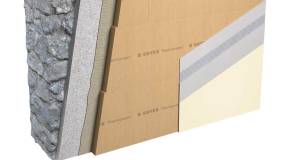 Ecological launches Retro EcoWall for internal wall insulation
Ecological launches Retro EcoWall for internal wall insulation -
 Xtratherm name changes to Unilin
Xtratherm name changes to Unilin -
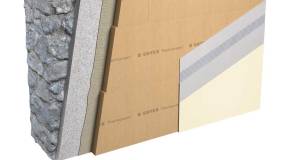 Ecological Building Systems launch Retro EcoWall for internal wall insulation
Ecological Building Systems launch Retro EcoWall for internal wall insulation -
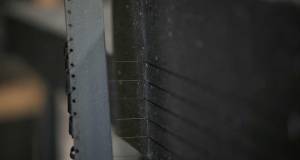 Kore launches low carbon EPS
Kore launches low carbon EPS -
 Kilsaran gets NSAI cert for EWI to steel frame
Kilsaran gets NSAI cert for EWI to steel frame -
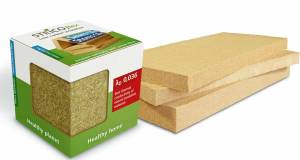 Steico offering free wood fibre insulation samples
Steico offering free wood fibre insulation samples -
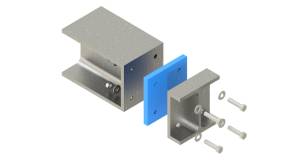 Top 5 questions about specifying structural thermal breaks
Top 5 questions about specifying structural thermal breaks -
 Major new grants for retrofit & insulation announced
Major new grants for retrofit & insulation announced -
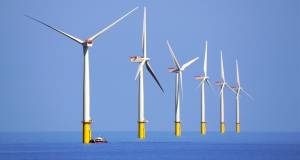 How will we decarbonise heating?
How will we decarbonise heating?

